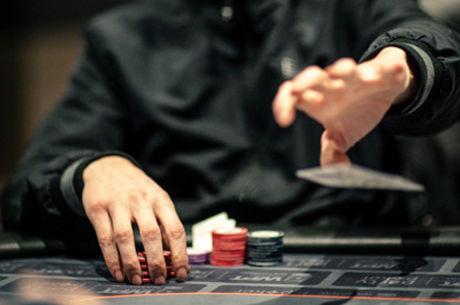Hand Review: Two Monster Hands Clash in WSOPE Main Event

Covering live poker tournaments for a living affords me the opportunity to see countless thousands of hands played out, many of which offer interesting and potentially valuable insights into how players �� both amateurs and professionals �� play the game. In this ongoing series, I'll highlight hands I've seen at the tournaments I've covered and see if we can glean anything useful from them.
The Scene
Over the past few weeks, I shipped across the pond to Rozvadov for my first time covering the World Series of Poker Europe. It really proved to be an interesting experience spending a couple of weeks in the rural part of the Czech Republic, walking into a casino in the middle of a tiny town and seeing �25/�50 PLO tables popping up everywhere like it was no big deal.
Most of the action I covered was of the no-limit variety, though, and the following hand comes from the �10,000 Main Event as Day 3 moved into its latter stages. The hand involves Maria Ho, but no, this isn't that Maria Ho hand.
The Action
Michal Mrakes, one of the chip leaders at the time with about 1 million at 4,000/8,000/1,000, raised to 18,000 from middle position with A?4?. Ho called from the small blind on a stack of about 350,000 with 7?7?.
Heads up, they saw a 3?2?5? flop and Ho check-called a continuation bet of 14,000 from Mrakes. When the 7? arrived on the turn, Ho bet out 36,000. Mrakes made it 108,000 and Ho called. Both players then checked the 8? river, and Mrakes took down the pot with his straight.
Concept and Analysis
Mrakes starts the hand opening with a pretty weak hand �� A?4?. But hey, when you've got chips, it's a party out there and just about any pot looks like a potential open. I, for one, say open away with the ace-rag in middle position.
More interesting to me actually is Ho's decision to call with sevens in the small blind. It's a very tricky hand in this spot because of her stack size of around 45 big blinds. Even with some of the large three-bet shoves we're seeing nowadays, this is just way too many chips to ship in there with sevens.
That leaves the options of calling, folding, or three-betting small, and none of those three feels that great. Can you really fold sevens to an opening range that you're clearly well ahead of? Calling is tough, too, because you're inviting the big blind along, making it likely you'll need to hit a set to win.
Three-betting small is nice because you likely knock out the big blind, but then what happens postflop? You've got a middle pair and if your opponent peels, it's going to be very, very tough to play it out of position on any texture that doesn't contain a seven.
Calling seems like the best choice of the bunch, but you're going to find yourself navigating some tricky waters in a lot of cases.
In any case, the way the hand played out, Ho flops a weak overpair and check-calls a bet. Simple enough and standard enough.
On the turn, the next interesting spot occurs as Ho opts to lead out with a turned set. Certainly not standard, but I am a fan of these turn leads in general in situations where you either turn a strong hand or a backdoor draw and you expect your opponent to check back.
Would check-raising be better? It's all very opponent-dependent. If Mrakes is going to keep barreling, you're going to build a bigger pot in most cases by checking. Meanwhile if it's the type of player who likes to play small ball, betting will do more good.
As played, of course, the pot's going to be massive no matter what since Mrakes flopped a wheel and raises. Ho likely figures she has the virtual nuts and has to decide whether to jam the rest in now or see what happens on the river. I think I lean more towards jamming here for a couple of reasons.
First, if Mrakes has an overpair or even a stronger hand like a lesser set, there's no guarantee the rest of the money will go in on the river. He might check back even a dead river card, and there are a lot of action-freezing cards that can come. Aces, fours and sixes make four to a straight, and a spade makes three to a flush.
However, if you believe your opponent to be weak or drawing here, the only way to get more money in the pot is to just call and hope to induce a bluff on the river. So there are merits either way.
Ho decides to just call, leaving herself less than a pot-sized bet behind. The spade does fall and both players check. Ho, naturally, has to be worried about a possible flush, and jamming might chase away Mrakes' weaker hands. Should Mrakes be shoving for value, though?
Looking at Ho's stack size, it's hard to imagine her not shoving the river if she'd made a flush. She had just over 200,000 and the pot was about 300,000. Checking the river is just letting your opponent see a free showdown if you get there.
Mrakes beats everything besides a flush, but Ho's turn lead likely had him a bit befuddled as he tanked for awhile on the end. He had to figure the seven may have improved her somehow, and maybe he figured something like A?5? made sense.
Regardless, he had to be kicking himself at showdown when he saw how hard he'd coolered his opponent only for her to preserve more than half of her chips.
Well, that might be the most I've written about any hand in this series, but it's one chock-full of interesting decisions from both sides. It's also a hand that could have ended very differently if either player had chosen a different line on almost any street.









